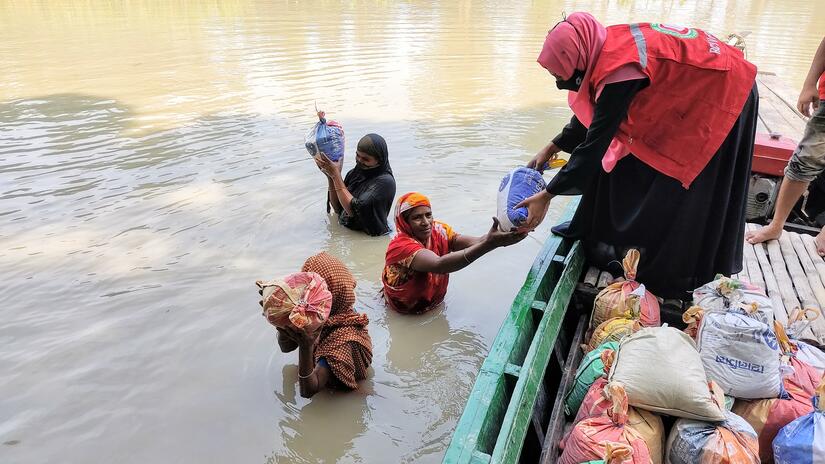
Kuala Lumpur, 15 December 2021 – Asia and the Pacific have experienced relentless and unpredictable climate-related disasters in 2021, severely affecting more than 57 million people during the peak of the global pandemic.
In 2021, the International Federation of Red Cross and Red Crescent Societies (IFRC) has launched 26 new operations, 15 of which are climate-related disaster responses. The IFRC is still responding to a further 21 disasters across Asia and the Pacific, from previous years.
South Asia has been the worst hit this year, with millions of people affected by multiple disasters and little time to recover from one to the next.
In India, more than 18 million people have been severely impacted by floods and cyclones this year, according to data from the Indian Government, Disaster Management Division. In Bangladesh, more than half a million people have been swamped by floods, with hundreds of villages marooned for weeks at a time. Around one third of Nepal suffered floods or landslides with many occurring outsides of the traditional monsoon season.
Jessica Letch, IFRC Emergency Operations Manager said:
“For much of this year, millions of families across Asia have been reeling after multiple blows from successive disasters and the devastating impacts of the COVID-19 pandemic.
“From India to Indonesia, in Nepal and Bangladesh, our health and emergency teams are reporting livelihoods shattered by frequent and unpredictable climate disasters.”
In China’s Henan Province, 13.9 million people were affected by severe flooding in July. In Southeast Asia, Indonesia has been worst affected by disasters, with more than one million people swamped by floods in the past month alone, according to the Indonesian Government Regional Disaster Authority.
Drought, combined with associated economic collapse – which unfolds slowly but with devastating consequences – is affecting more than 22.8 million people in Afghanistan, according to the latest Integrated Food Security data.
Other countries across Asia have also been hit by multiple disasters. Nearly one million people were swamped by flooding in Thailand, more than half a million people affected by floods and typhoons in the Philippines and over 125,000 people hit by floods in Myanmar. Pacific Island countries also faced significant flooding due to storms and rising sea tides.
“Responding to disasters at the height of the COVID pandemic has involved some of the most complex operations and the changing climate is throwing unpredictable floods and storms at millions of people, making life even tougher,” said Jessica Letch.
“As risks mount with climate change, the IFRC is investing in anticipatory early warning systems to better prepare communities to act before disasters strike, to reduce the loss of lives and livelihoods.”